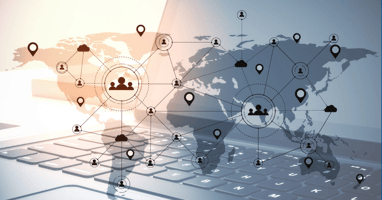Now that you know the different stages of Digital Transformation: Digitization of data and...
Our Digital Transformation Toolkit for Beginners
.png?width=1200&name=LinkedIn%202%20(3).png) Digital Transformation is an “engine” that collects and uses data as fuel to make ever-improving investment decisions. To begin logging and leveraging valuable decision-making data, we need a tool kit. Read more...
Digital Transformation is an “engine” that collects and uses data as fuel to make ever-improving investment decisions. To begin logging and leveraging valuable decision-making data, we need a tool kit. Read more...
As I noted in my previous post about daily journaling, the journey can be started with simple tools that are available to everyone. Then, you can begin using a more advanced toolset as you progress, evolve, and transform. Don’t worry about scale or scope for now!
For this first project you’ll need the following:
- Pen and Paper – Planning and Logging start here. I recommend yellow, letter-sized notepads (8.5” x 11”). These provide numerous opportunities for mistakes as well as a consistent clean campus with each sheet.
- Microsoft Excel – Digitizing, Taxonomy, Planning, and Logging. I’m sure other spreadsheet applications would work fine. I just happen to know this particular tool better than others. We will be going over specific techniques to use in Excel in the next couple of blog posts.
- Scripting PowerShell – There are many ways we can enable automation, but this one is free, ubiquitous, and very scalable. We are going to be using Version 7.
- Visual Studio Code (VS Code) – Free, easy, powerful.
Don’t start downloading, updating, installing, or even grabbing a fresh notepad just yet. Before you begin to assemble your toolkit, we need to define a couple of very similar-sounding terms first:
“Digitization” refers to presenting documents and other tangible media as a computer file (web page, API, interface, even a picture of a document). Gartner Inc. defines digitization as “the process of changing from analog to digital form.” This makes the materials easier to store, track, and manage. It is part of the overall Digital Transformation process, but usually a very early step.
- When we move the data from logging with pen and paper to Excel, this will be digitization.
“Digitalization” refers to using collected data and metadata to make changes to our workflows. This is where the Digital Transformation engine kicks over for the first time. We will look at all the data we have collected and attempt to find patterns and metrics which impact our institution and its existing processes. This is where we will try to recognize the key metrics we need to track and those that we need to deprioritize, deprecate, or ignore.
- Automation of data collection, reporting, and analysis.
- We will learn how to generate useful reporting from the data in Excel and use it to make better plans on how we will spend time and money.
- This is where we will be spending a large amount of time on technique, technology, and automation.
- We will focus on PowerShell, VS Code, and many other tools here.
“Digital Transformation” refers to when the engine is sustainable and causes a significant shift in the institution's business model, focus, budget, and overall culture.
In the next blog post, we will begin to cover digitization using Excel!


.png?height=200&name=LinkedIn%202%20(6).png)
-png.png?height=200&name=LinkedIn%20Blog%20Image%20(5)-png.png)
